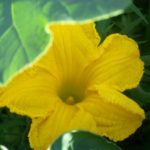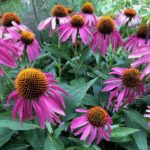Full Moon Greetings – December 6, 2022

Yarrow in the Garden
Achillea millefolium, or yarrow, is a beautiful wildflower and easy to grow healing plant. The leaves are feathery, soft, and fernlike and flower heads are made of clusters of many tiny flowers. In the wild, yarrow is usually shades of white or pink, but there are newer cultivars in brighter colors.
One of the easiest ways to get yarrow into your yard is to find a friend who has some to share. If that is not possible, you can find seeds at: Botanical Interests and Baker Creek Heirloom Seeds . Yarrow will establish itself pretty quickly from seeds or root cuttings and is a wonderful addition to your yard. It is drought tolerant and attracts pollinators and other beneficial insects.
 Healing Energy
Healing Energy
Yarrow’s healing properties have been known for thousands of years. It is astringent (stops bleeding) , antiseptic (kills germs), and promotes healthy cell growth. These qualities made it valuable on battlefields and in midwives’ birthing kits. Some of yarrow’s common names include soldier’s woundwort and knight’s balm, which indicate its long history of being used for treating wounds.
Achillea, the first part of the plant’s botanical name, comes from Achilles the mythical Greek hero of the Trojan War. He is said to have used yarrow to heal his soldiers. In one legend, Achilles’ mother dipped his body in yarrow tea when he

was an infant as a way to protect him. Of course she had to hold him by his heel to accomplish this and (spoiler alert if you’ve not read the Iliad) he is mortally wounded by an arrow to his heel, the only part not protected.
Stories aside, yarrow has documented properties for healing physical wounds and promoting new cell growth. And that plant energy for healing and protection can be invoked on an emotional and spiritual level as well.
The Mechanics of Healing
 Yarrow works well as a wound healer because of its ability to stop the bleeding, reduce infection, and help new cells to grow. We can apply that energy to emotional and spiritual wounds as well as physical. For those working through past trauma, it is important to not replicate past hurt in present relationships – otherwise there is still “bleeding” going on. And I don’t mean just primary partner relationships. We can experience hurtful relationships among co-workers, family, neighbors, and anyone we interact with. Sometimes we try to ignore bad behavior in the hopes it will disapear on its own. It may feel wise to not rock the boat, but the energy of yarrow says othewise – stop the bleeding so that healing can occur.
Yarrow works well as a wound healer because of its ability to stop the bleeding, reduce infection, and help new cells to grow. We can apply that energy to emotional and spiritual wounds as well as physical. For those working through past trauma, it is important to not replicate past hurt in present relationships – otherwise there is still “bleeding” going on. And I don’t mean just primary partner relationships. We can experience hurtful relationships among co-workers, family, neighbors, and anyone we interact with. Sometimes we try to ignore bad behavior in the hopes it will disapear on its own. It may feel wise to not rock the boat, but the energy of yarrow says othewise – stop the bleeding so that healing can occur.
It can be challenging to set boundaries and detach ourselves from harmful situations. Yarrow’s attribute of nurturing new cells can provide direction for this as well. Healthy cells support one another and make it easier for the whole organism to fight infection. We can apply this idea to our lives and reach out to others to intentionally create healthy and safe support systems.
Working with Yarrow Energy
 One way to connect with yarrow’s healing energy is through meditation and journaling. It is best when aligning with plant energy to have the plant on hand. If you live in a cold climate as I do, you won’t be able to find yarrow outdoors right now. It is a perennial but it dies back in the cold weather. Local herbs shops should have dried yarrow available if you don’t have any of your own. Preparing a cup of yarrow tea to breathe in the fragrance and sip as you write also establishes a connection with the plant. (Note that a few people have allergic reactions to yarrow so go slowly at first.)
One way to connect with yarrow’s healing energy is through meditation and journaling. It is best when aligning with plant energy to have the plant on hand. If you live in a cold climate as I do, you won’t be able to find yarrow outdoors right now. It is a perennial but it dies back in the cold weather. Local herbs shops should have dried yarrow available if you don’t have any of your own. Preparing a cup of yarrow tea to breathe in the fragrance and sip as you write also establishes a connection with the plant. (Note that a few people have allergic reactions to yarrow so go slowly at first.)
Sitting in meditation, hold the idea of yarrow as a healing plant and its many attributes that invoke healing. Ask yourself, “What needs to be healed in my world?” and “How can I contribute to that healing?” Wait for the answers. Remember yarrow’s prescription for healing – stop any ongoing damage and infection, and support the growth of healthy cells. How does that imagery translate to your life?
Lunar Blog Post Series

This post is part of my lunar blog series. Each full moon I write about one of the plants featured in my book, Growing Mindful. Each new moon I write about a topic related to gardens, mindfulness, and spirituality. For more details and a list of past lunar blog posts, click here.




I enjoy Yarrow in my garden and especially because so many different smaller insects are drawn to it. But it seems kind of invasive. I have to constantly cut it back since my garden is so small. It is incredibly resilient, which is an important quality and one I want to emulate and encourage others to do so. Learning about the healing aspects of it is wonderful and really helps me appreciate Yarrow more. Thank you Joann!
Debbie, Yarrow will spread like many perrenials but I think it is fairly easily held in check by just pulling out the extra plants (they are good for the compost).
It’s funny because I have some in with the lemon balm and the lemon balm is way more agressive about taking over a space (in my yard anyway). And you are right that yarrow is very resilient and so beautiful!
I agree that lemon balm is also very invasive. I cannot even put it in my small beds with other plants, it has to be in it’s own container. But I also have to constantly pull out new shoots of Yarrow during the growing season. I wish I had more beds because I would have one just for Yarrow. I have three different Yarrow plants and colors in my garden. I love seeing it in the wild in Colorado. It’s clearly native and thrives in our state.
Maybe yarrow in its own container as well. I know you have limited space so that might not work – and yes, I love seeing in the wild as well.
You have given me an idea – depends on if I move. It might be time to add another bed in my back area and let the Yarrow take over the bed it’s in. Without a dog now, I can fill up the yard more, as no need for a walking path and place to sun for a dog. Thank you Joann!
I like it! 🙂